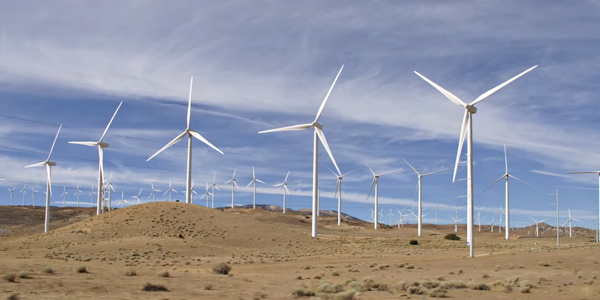By Jason Fordney
Western U.S. utilities procured three times more wind capacity in 2003-2014 than planned, showing there is a limited relationship between electricity resource planning and procurement, according to a new Department of Energy study.

Actual and planned nameplate capacity additions by resource and contract type for 12 load-serving entities in the West. | Lawrence Berkeley National Laboratory
Expansion of nameplate wind capacity by 2015 was expected to be about 15% but was actually about 50%, likely coming from power purchase agreements, the analysis of 12 Western load-serving entities showed. Changes in load growth, regulation and contracting led to adjustments in resource planning, and differences in resource mix came largely from renewable portfolio standards and demand-side management, as well as fuel price changes.
The study considered what types of economic and regulatory information is used in planning and procurement, and examined the value of the planning process in light of its relationship to actual practice. The analysis compared integrated resource plans filed in the early and mid-2000s to the actual procurement that followed.
Although IRPs are designed to ensure that utility investment decisions are as cost-effective as possible, there had been no previous “empirical assessment on the effectiveness of IRP implementation,” said the study, conducted by the Lawrence Berkeley National Laboratory.
“We find that most information produced in the planning phase is generally disconnected from the procurement phase,” the researchers said.

Western Wind Farm | SPP
After 2008, adoption of less efficient simple cycle combustion turbines correlated with dropping natural gas prices, which might also have been needed to provide balancing power because of higher usage of intermittent renewables. There was also less usage of coal-fired generation than planned, as difficulties in getting coal plants permitted were mentioned by several LSEs in their resource plans; natural gas was likely used as a baseload power substitute.
The researchers said only some of the forecasts, least-cost/risk portfolios and other information produced during the long-term planning processes were used during the procurement processes, and that procurement decisions relied “extensively on the most recent information available for decision making.”
“These findings suggest that states’ IRP rules and regulations mandating long-term planning horizons with the same analytical complexity throughout the planning period may not create useful information for the procurement process,” the study says.
The study found “in aggregate … a general alignment between planned and procured supply-side capacity. However, there are significant differences in the choice of supply-side resources and type of ownership for individual LSEs.”
Avista, Puget Sound Energy, Seattle City Light and Public Service Company of New Mexico procured less capacity than planned, possibly because of lower load growth, while Idaho Power, PacifiCorp and Portland General Electric procured more capacity than was planned. Idaho Power procured two to three times more wind capacity than planned. Although PacifiCorp had not planned for any wind in 2004, more than half of its procured nameplate capacity was wind.
For the Los Angeles Department of Water and Power, Sierra Pacific, Nevada Power and Public Service Company of Colorado, the largest difference between planning and procurement was substituting natural gas units for coal.
There is no formalization of how utilities should use inputs from their IRPs in their procurement, and there is little evidence regarding how sensitivity and risk analyses used in the IRPs are actually applied in procurement decisions, the study says.
It called for a “more careful” definition of the links between IRPs and procurement, calling it “an important problem as energy technologies, markets, and policy and regulatory goals evolve and become more complex.”


